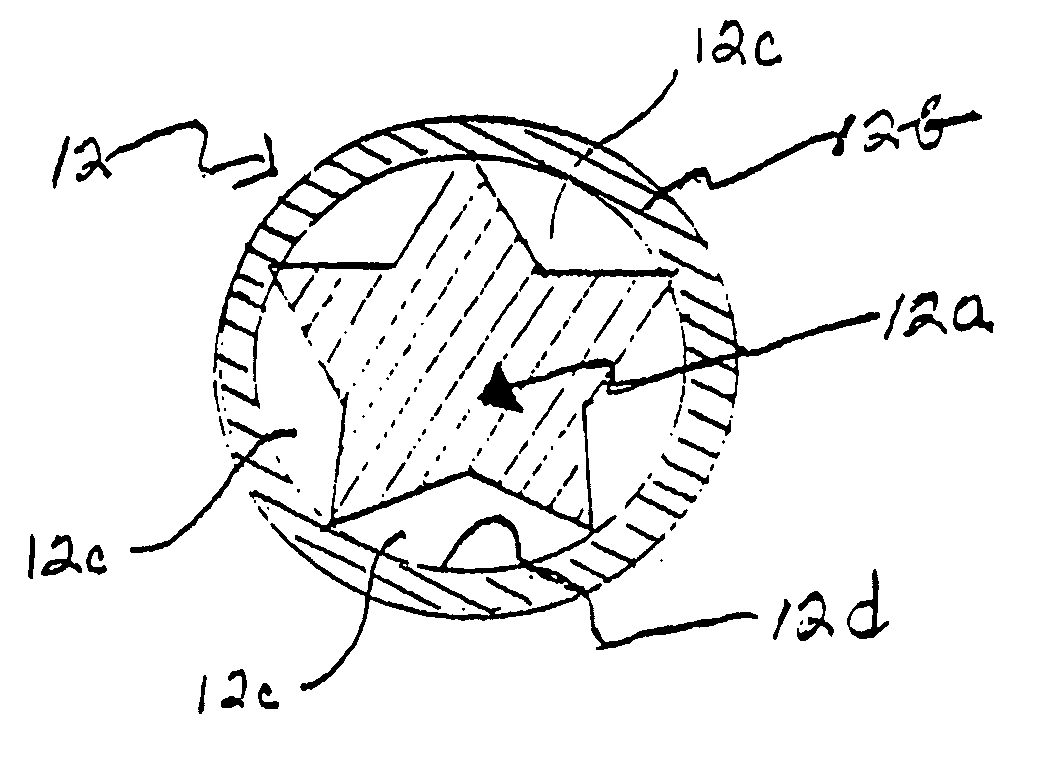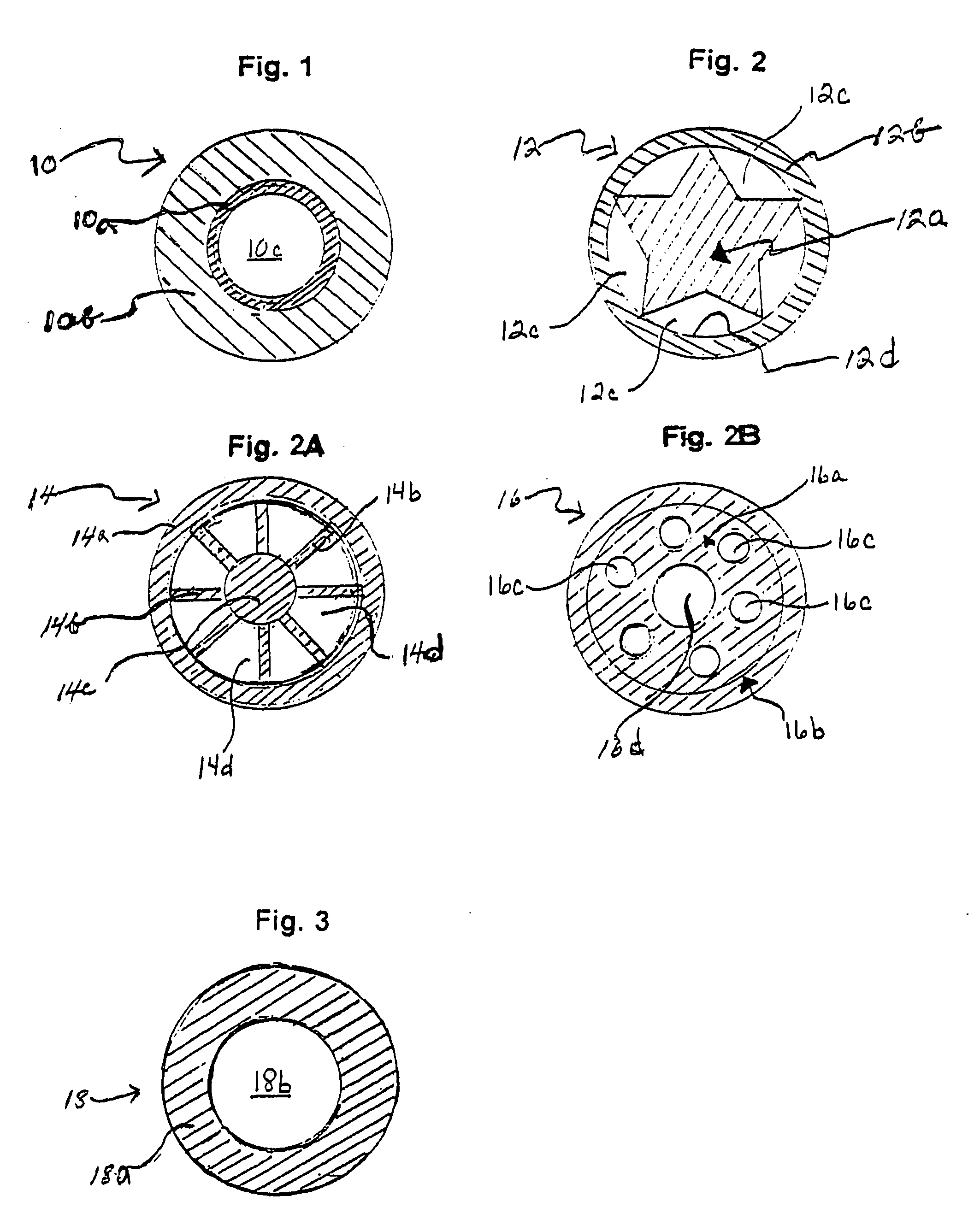Tubular signal transmission device and method of manufacture
- Summary
- Abstract
- Description
- Claims
- Application Information
AI Technical Summary
Benefits of technology
Problems solved by technology
Method used
Image
Examples
Embodiment Construction
[0024] A signal transmission tube as described herein comprises, instead of pulverulent reactive material, a reactive polymeric material. In some embodiments, the signal transmission tube comprises a confinement tube within which the reactive polymeric material is disposed as a rod within the confinement tube or as a layer of a coating composition (e.g., a paint) on the interior surface of the tube. In such embodiments, the confinement tube is preferably made of a non-reactive material or materials, such as the single- or multiple-ply hollow polyethylene and / or SURLYN® tubes conventionally used in shock tubes.
[0025] Reactive polymeric materials are polymeric materials that have reactive pendant groups such as azido groups, nitrate groups, triazoline groups and / or triazole groups chemically bonded to the polymer backbone, rather than comprising a relatively inert polymeric material or resin having pulverulent reactive material physically blended therein. However, a reactive polymeri...
PUM
 Login to View More
Login to View More Abstract
Description
Claims
Application Information
 Login to View More
Login to View More - R&D
- Intellectual Property
- Life Sciences
- Materials
- Tech Scout
- Unparalleled Data Quality
- Higher Quality Content
- 60% Fewer Hallucinations
Browse by: Latest US Patents, China's latest patents, Technical Efficacy Thesaurus, Application Domain, Technology Topic, Popular Technical Reports.
© 2025 PatSnap. All rights reserved.Legal|Privacy policy|Modern Slavery Act Transparency Statement|Sitemap|About US| Contact US: help@patsnap.com


